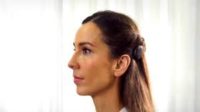20 Jul Cochlear Bridges the Technology Gap with First Made for iPhone Cochlear Implant Sound Processor
MedicalResearch.com Interview Provided on behalf of:
 Jan Janssen, Senior Vice President
Jan Janssen, Senior Vice President
Research and Development
Cochlear Limited
MedicalResearch.com: What is the background for this device?
Response: Cochlear implants treat hearing loss by electrical stimulation of the hearing nerve, bypassing the damaged parts of the hearing pathway. Cochlear implants system consist out of an external sound processor that detects and processes the sounds and then sends them to the implant. The implant receives this information and turns it into electrical signals that are delivered to the hearing nerve and from there to the brain.
The Nucleus® 7 Sound Processor is the world’s first and only Made for iPhone cochlear implant sound processor, allowing users to stream sound from their iPhone®, iPad® and iPod touch® directly to their cochlear implant sound processor. It not only enhances the experience of talking on the phone, it also makes features like enjoying music or watching videos, as well as audio apps such as Maps or FaceTime, more easily accessible.
The Nucleus 7 Sound Processor is also the smallest and lightest behind-the-ear sound processor on the market.
MedicalResearch.com: How many individuals are thought to have some degree of hearing disability?
Response: Hearing loss represents a significant global health burden with more than 48 million people living with moderate to profound hearing loss in the U.S., and 360 million worldwide. The incidence of hearing loss is not slowing – it is expected to affect 1.2 billion people globally by 2050. According to the World Health Organization, there are approximately 72 million people who could potentially benefit from the use of a hearing device, such as a cochlear implant or hearing aid.
Cochlear is committed to providing people with disabling hearing loss innovative solutions to help them reach their full hearing potential, which includes bringing them the benefits and conveniences of Made for iPhone technology.
MedicalResearch.com: What is unique about the Nucleus 7 Sound Processor and Made for iPhone bimodal hearing system? Will they enable wearers to better hear or use a cell phone in situations with background noise?
Response: With the availability of the Nucleus 7 Sound Processor, Cochlear is also offering the first Made for iPhone Smart Bimodal Solution (the combination of a cochlear implant in one ear and a hearing aid in the other), enabling both hearing devices to provide synchronized streaming to both ears from a compatible iPhone, iPad or iPod touch. The Nucleus 7 Bimodal Solution is delivered by using a Nucleus 7 Sound Processor, a compatible ReSoundTM hearing aid and a paired iPhone or iPod to control functionality for both hearing devices.
For those living with hearing loss, being in a noisy environment, such as at a restaurant or reception hall, can be extremely difficult to the point where they may start to avoid these types of settings, even when they are wearing a hearing aid. The Nucleus 7 Sound Processor features the industry-leading SmartSound® iQ with SCAN, and dual microphone technology, helping people to hear more clearly in any environment.
The seamless and personal streaming experience and audio control offered by the Nucleus 7 Sound Processor means a person living with moderate-to-profound hearing loss who has struggled to use the phone and hear soft sounds can feel confident again.
MedicalResearch.com: Can the Nucleus 7 Sound Processor benefit children as well?
Response: Yes. In fact, for children, the time spent listening and speaking is critical for language development and is a key reason why parents choose a cochlear implant for their child. The Nucleus 7 Smart App gives parents confidence that they can monitor their child’s sound processor and ensure they are hearing. The device also includes a variety of features that make it easier on parents and caregivers including:
- The new Hearing Tracker feature records coil-offs time (each time the sound processor coil does not detect the implant coil, such as if it has fallen off a child’s head) and time in speech (which measures the amount of time spent in speech environments in hours, including FM and streaming).
- The Nucleus Smart App Find My Processor feature helps locate a lost sound processor by using Location Services to determine the last place the sound processor was connected to the paired iPhone or iPod touch, whether it has been lost on the playground, in the house or in the car.
- Parents are also able to see battery status, adjust volume and change programs using the Nucleus Smart App without needing to touch the Nucleus 7 Sound Processor.
MedicalResearch.com: Is there anything else you would like to add? Any disclosures?
Response: The Nucleus 7 Sound Processor is the latest in a range of Made for iPhone hearing solutions brought to market by Cochlear. Cochlear’s engineering team has worked closely with Apple to bring Made for iPhone technology to our recipients.
In 2015, Cochlear released the Baha® 5 Sound Processor – the first ever Made for iPhone bone conduction sound processor, available to people with moderate to severe hearing loss. Now in 2017, Cochlear has introduced the world’s first Made for iPhone cochlear implant sound processor — the Nucleus 7 Sound Processor — providing access to the digital world like never before for people with severe to profound hearing loss.
Cochlear leads the way in bringing to market innovative hearing solutions that improve hearing performance for our customers, to deliver on our commitment to help them Hear now. And always.
The availability of the Nucleus 7 Sound Processor differs from country to country. For more information and to learn more visit: www.cochlear.com/nucleus7
MedicalResearch.com: Thank you for your contribution to the MedicalResearch.com community.
Note: Content is Not intended as medical advice. Please consult your health care provider regarding your specific medical condition and questions.
Last Updated on July 27, 2017 by Marie Benz MD FAAD
